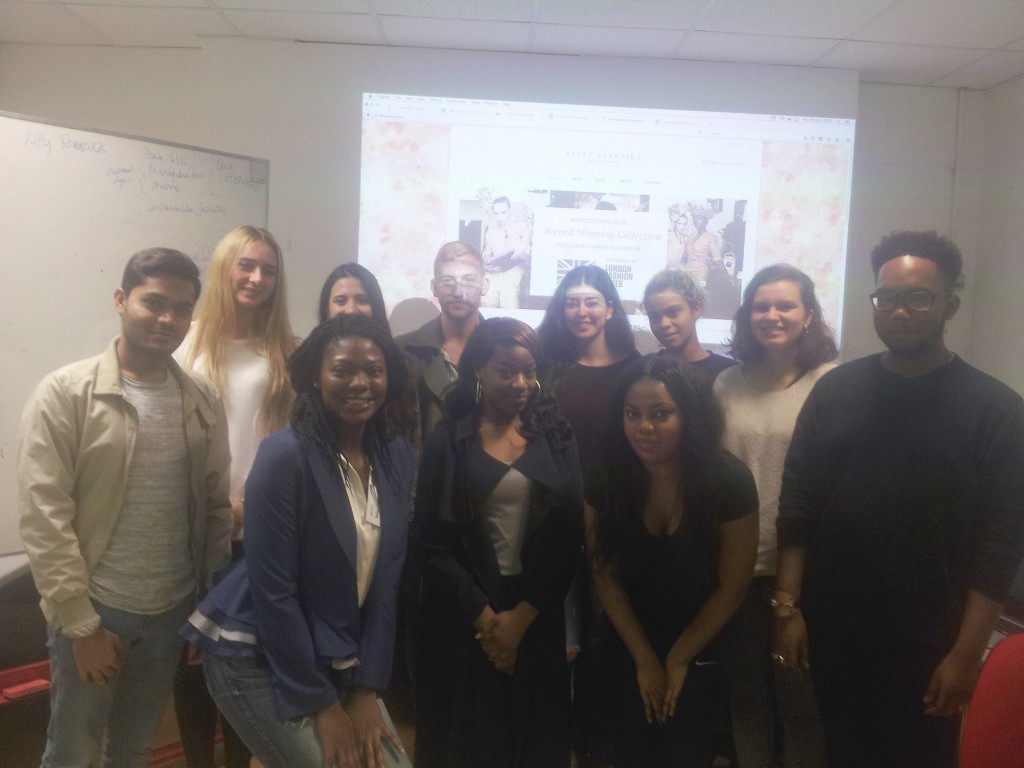Q&A with University of the Arts London students
A couple of months ago I was invited to a live Q&A by University of the Arts, London College of Communication BA students, to shed some light on sustainable and ethical fashion, about the Kitty Ferreira brand and how they can influence communications in the sustainable business world.

When their tutor, Nicola, who has previously written about the Kitty Ferreira brand, presented the idea that I could talk to her students about ethical fashion business, whilst offering an opportunity for them to practice their interviewing and journo skills, I couldn’t refuse.
These were a bunch of very warm, welcoming and engaged 19 to 20 something year olds , so much so, I challenge you to pick me out among my 10 year juniors in the above pic 🙂
Here are a few of my favourite write-ups by these students:
It was interesting to see their reactions to not knowing that between 40-50,000 silks worms are boiled alive to make just one silk blouse on the high street, that conventional cotton production is the most environmentally damaging raw material more so than polyester, that farmers in developing worlds often are entrapped in a cycle of poverty exposed to toxins and chemicals used to colour and finish our clothing that damage their newborn……and how would they know?
Fashion is notoriously a ‘smoke and mirrors’ industry, selling a so called aspirational life whilst keeping the ‘dirty side’ firmly hidden.
Which leads me to a random message I had received on Linkedin, by a young lady who had grown weary of conventional fashion business. Her message resonated with me on so many levels yet brought a renewed faith that we can make a difference:
She and these students represent the next generation who can really make that difference between a business’s decision to pollute an off shore village with toxic dyes or simply not to. I was recently speaking to a photographer who tells me that the South East London school her 13 year old daughter attends builds sustainability into their curriculum; how she’s incessantly hounding her mother to recycle, to not waste and that she’s becoming more aware of ethically made fashion, ” she’s always questioning.”
Brilliant and just what is needed. Some would argue that it is the job of the consumer to enact change, others believe the responsibility lies with business; I think it is a mixture of the two, with Government being the main driver of change, particularly through education and a complex issue to address, as after all we’re talking about a change of system– a Capatalist system that enables a disparity of health, wealth and well being across the globe.
More recently we saw COP21, the 2015 Paris Climate Change Conference take place for the first time in over 20 years of UN negotiations and aims to achieve a legally binding and universal agreement to keep global warming below 2°C. The UK and other rich nations promise to provide $100bn (£67bn) a year to help the developing world cope with global warming- deforestation, pollution of land, air and water due to manufacturing goods for our insatiable consumption.
The Global Goals (above) represents a more expansive, wider picture of ethical practice with such goals as #10 Reduce Inequalities and #16 Peace, Justice and strong institutions. Held in September this year by UN leaders, the aim is to achieve these goals by 2030.
We wait in earnest…
Hope you enjoyed reading and have a lovely xmas!

Leave a Reply